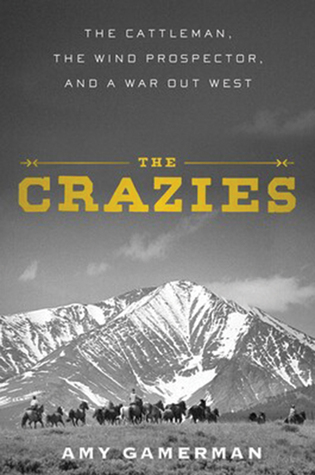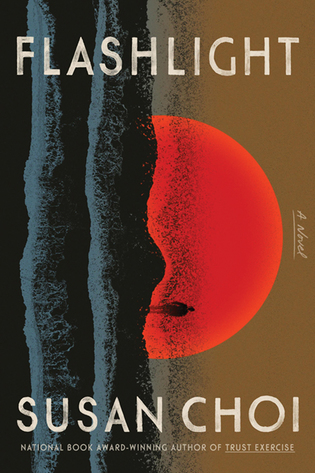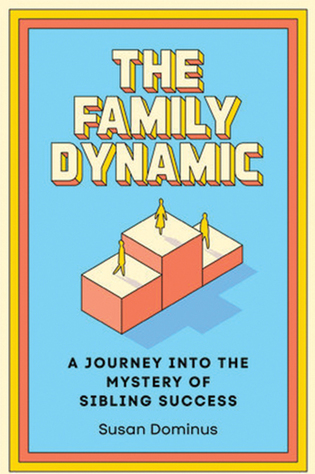
The Crazies: The Cattleman, the Wind Prospector, and a War Out West
Amy Gamerman ’85
Simon and Schuster, $29.99
Reviewed by Hampton Sides ’84
The American West is famous for its shoot-outs and its showdowns, its spectacular bonanzas and its just-as-spectacular busts. In the public imagination, the region has always been a place of volatility and promise, where scrappy individuals can scratch out a life and sometimes a fortune. But it’s also a place, especially in recent decades, where the ultrarich can create private Edens. Add to these themes another phenomenon that has buffeted the West, in nearly limitless supply: the wind.
These are the forces at play in Amy Gamerman’s masterful work of nonfiction, The Crazies. In 2004, a financially strapped Montana cattle ranch owner named Rick Jarrett learned there was good money to be made leasing his land to a wildcat wind prospector who proposed to erect an array of 500-foot-tall wind turbines. Jarrett was by no means an environmentalist—and he held no truck with the concept of climate change—but he desperately needed the cash to hold onto his debt-ridden ranch. “The wind was a steady force that was always working against you,” Gamerman writes. “People were buying wind? Well, goddammit, he had wind to sell.”
This seemed like a sound plan, especially in a deep red state, where it is virtually a sacrosanct proposition that a man can do what he likes with his own property.
The only problem was, Jarrett’s ranch happened to be located at the edge of Montana’s jagged, pristine Crazy Mountains, within the “viewshed” of some extraordinarily rich and powerful landowners. One of them was Russell Gordy, an oil-and-gas billionaire from Texas who Gamerman calls a “ranch collector.” Gordy didn’t want wind turbines marring the views on his bodacious 44,000-acre spread, nestled within a mountain range held sacred by the Apsáalooke Indians. He tried to buy Jarrett out, and when that didn’t work, Gordy lawyered up.
As the lawsuit drags on, The Crazies becomes an environmental land-use case writ large and a kind of fable for our times—with finely drawn portraits, worthy of Tom Wolfe, that deliciously capture the dress and mannerisms of her characters. Gamerman, a veteran Wall Street Journal reporter, has an endearing way of engaging with the major players and entering their worlds with curiosity and aplomb. The result is a “ghost story haunted by generations of dreamers and strivers, those drawn to the land and those who lost it, the dispossessed and the exiles.”
Hampton Sides ’84 is is the author, most recently, of The Wide Wide Sea.
__________________________________________________________________

Flashlight
Susan Choi ’90
Farrar, Straus and
Giroux, $30
Reviewed by Sylvia Brownrigg ’86
Like the shape of land when viewed from out in the ocean, the lines of Susan Choi’s brilliant, complex novel take some time to make out. We start with a snapshot of a father and daughter walking along a breakwater one evening (the last time he ever spoke to her) then move to the scene of a troubled, irritable child—that same girl—stuck with an American therapist probing for what lies behind her disruptive behavior at school. Louisa’s father Serk is dead, her mother Anne is ill and in a wheelchair, and ten-year-old Louisa has taken to stealing small items—like the therapist’s flashlight—largely to annoy all the adults who won’t stop annoying her.
As the family’s tale unfolds, Choi’s chapters focus on different characters: the ethnically Korean Serk (given name Seok), raised in Japan until his second-class citizenship there caused him to emigrate to the US; Anne, who had an early misguided liaison before marrying the rage-prone, fiercely secretive Serk; and bright Louisa, doted on by her father but rebellious from the start against her mother.
Serk, an academic in the Midwest, takes the family on a sabbatical year in Japan, where Anne’s slow-to-be-diagnosed MS hampers and imprisons her; and Serk disappears one night from a beach.
Choi takes time tracing the winding pathways of this blown-apart family. The story travels eventually into the brutalities of the North Korean regime, with harrowing scenes of famine and reeducation camps. A thematic throughline is the frail, persistent nature of memory. At one point, Louisa recovers “bright ribbons of recollection, each thinly cut from the overall fabric and beaten hard by the mind’s wind”; later, it is more of a somatic experience: “If what is happening now is a belated understanding it doesn’t occur in ideas or words.” When disparate memories are at last restored, in this masterful and moving novel, Choi shows us how connections can remain, even through the direst circumstances.
Sylvia Brownrigg ’86 is the author, most recently, of The Whole Staggering Mystery: A Story of Fathers Lost and Found.
__________________________________________________________________

The Family Dynamic: A Journey into the Mystery of Sibling Success
Susan Dominus ’92, ’99MSL
Crown, $30
Reviewed by Sue Halpern ’77
We’ve all heard of them, and maybe we know them: those families where every child has grown up to be an exceptional, accomplished adult. Is it preordained by genetics, the consequence of tiger parenting, an expression of economic advantage, or something in the water? To find out, The New York Times journalist and Yale lecturer Susan Dominus ’92, ’99MSL, set out on a quest, historical and contemporary. Her new book, The Family Dynamic: A Journey Into The Mystery of Sibling Success, is an engaging portrait of six families, none quite like the other.
There are the Brontë sisters, Charlotte, Anne, and Emily, each of whose literary careers might not have happened but for the others, and, more recently, the tech visionaries Susan Wojcicki (YouTube) and Anne Wojcicki ’96 (23andMe). The Wojcickis grew up on the campus of Stanford, where their father was a physics professor. That they achieved something notable may seem less surprising than it was for, say, the Murguía siblings, whose parents’ education never went beyond seventh grade. Against all odds, two became federal judges; another an executive vice chancellor at the University of Kansas, after working in the Clinton White House; and a fourth a philanthropist focused on grassroots efforts in the Hispanic community where they’d grown up.
If there is a single thread connecting these stories, it’s the influence the siblings have on each other. If the parents play a role, it is mostly to stay out of the way. For those who read The Family Dynamic looking for advice, this may be unsettling. If there is a message here, it is to back off and let the siblings sort it out.
Sue Halpern is author, most recently, of the novel What We Leave Behind.
 loading
loading

